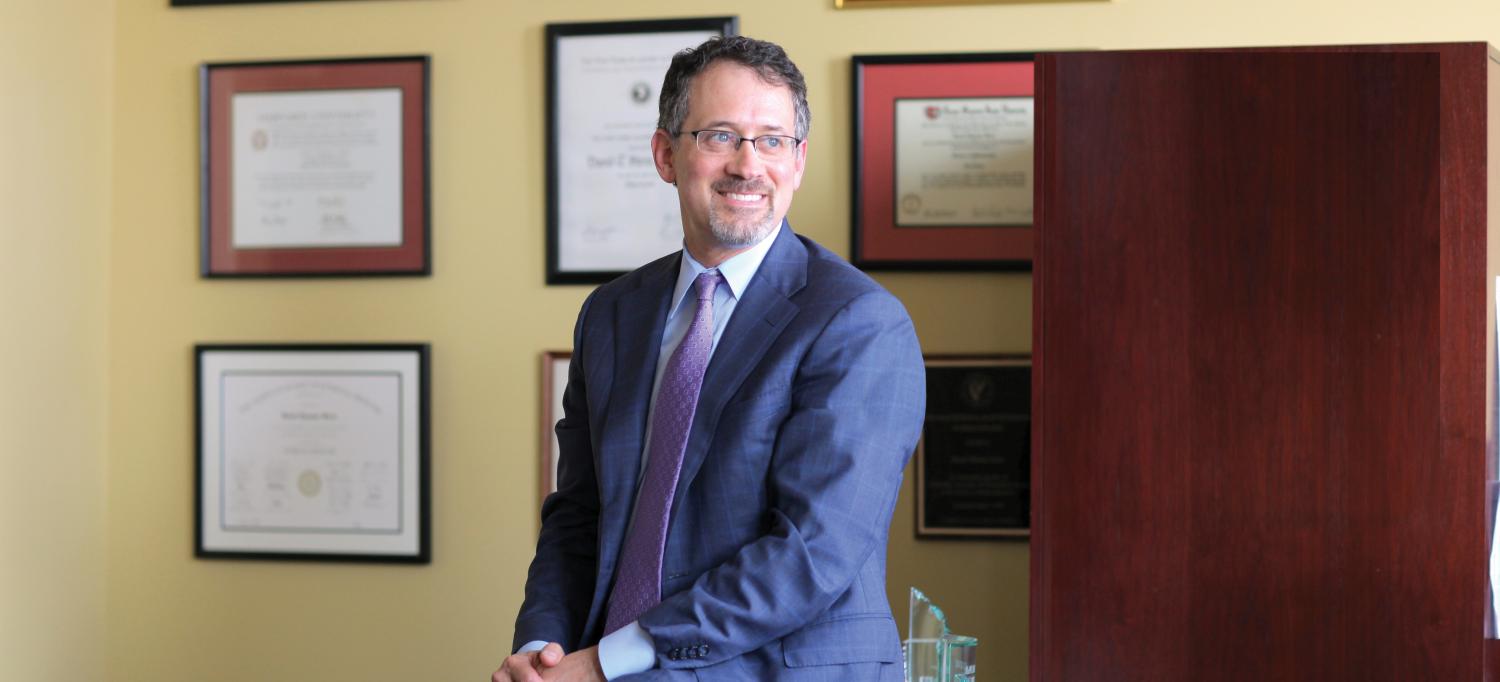David Stern, MD, PhD, Vice Chair for Education & Faculty Affairs, on the Science of Teaching Students the Unwritten Rules of Medicine

David Stern, MD, in his office at the Manhattan VA Medical Center.
Photo: John Abbott
Nearly a quarter of a century ago, David Stern, MD, PhD, was among a handful of doctors in the U.S. pursuing a doctoral degree in education, having become determined to conduct rigorous research into how to improve medical education. But the doctorate program, at Stanford University, had gotten off to a slow start for him. “I was listening to the lectures on how children learn, and wondering what it could have to do with medicine,” he says.
Things suddenly perked up for Dr. Stern when he found himself pondering a question: How do first-grade students learn to raise their hands in class? “When the teacher asks what one plus one equals, students don’t just blurt out ‘two,’” explains Dr. Stern. “They know they have to raise their hands and be called on before answering. But raising hands isn’t part of the explicit curriculum. Where do they learn it?”
Dr. Stern, now professor of medicine at NYU Langone and chief of the Medical Service at the Veterans Administration New York Harbor Healthcare System, learned that the answer lies in what educators call the “hidden” curriculum. In the case of medical school, the term refers to the many ways students learn the unspoken rules and culture of medicine, not through textbooks and formal lectures but through everyday exchanges in informal settings such as hallways and hospital cafeterias. It was an insight that inspired a long-standing fascination with how doctors learn.
Now, Dr. Stern’s journey is starting to change the way medical residents at NYU Langone learn and work, to the benefit of patients. Part of his role at the Medical Center, in addition to his more traditional clinical and managerial responsibilities, is to introduce new routines for residents that subtly teach the hidden rules and culture of medicine. One of those new practices took hold this past summer during the monthly rotation in medical-resident assignments, when hundreds of NYU Langone patients were introduced to the incoming residents taking over their cases by the outgoing residents, who briefed their replacements on the nuances of their care.
“Interns and residents learn values in hospital hallways and elevators and cafeterias, during rounds and breaks,” says Dr. David Stern. “The lessons can be far more powerful than learning about values in the classroom.”
Though most of the patients wouldn’t have known it, incoming residents normally introduce themselves and pick up the case details guided only by a written summary from the previous resident. The “warm handoff,” highly unusual in medical centers, was a first for NYU Langone.
“It’s a change to the structure of the residency program, and it teaches important lessons to residents about teamwork and making a personal connection with patients,” says Dr. Stern. “Those are values that are hard to communicate in a classroom.”
The hidden curriculum that transmits these subtle lessons is usually informal and ad hoc, but it’s critical to medical education, insists Dr. Stern. “It’s how physicians learn professional values, like responsibility for patients, and respect and collaboration,” he says. “We add material about these values into medical school courses, but lectures are not really effective. Interns and residents learn values in hospital hallways and elevators and cafeterias, during rounds and during breaks. It happens in the ‘interstitial fluid’ of daily work. And the lessons can be far more powerful than learning about values in the classroom.”
After his PhD, Dr. Stern, then on the faculty of the University of Michigan, set out to prove the importance of the hidden curriculum and pin down examples. He spent hundreds of hours shadowing interns and residents in hospitals in the 1990s, listening for informal teaching moments. He found that what doctors heard and saw on the job tended to override what they were told in classrooms and handbooks.
“You can tell medical students until you’re blue in the face that they need to have 15 minutes of open-ended bedside conversation with each of their patients,” says Dr. Stern. “But if they see the attending physician talking for only five minutes from the patient’s doorway, that’s probably what they’ll end up doing, too.”
The warm handoff is just one of the ways in which educators at NYU School of Medicine are working to change the environment to promote professional values. Another is a “geographic ward” program that assigns residents to specific wards.
“Residents used to live, eat, and sleep near the patients, doctors, and nurses in a single ward, until the practice was lost to the drive for efficiency,” says Dr. Stern. “But staying with one ward means patients don’t have to wait for nurses to hunt down the on-call physician, reinforcing a sense of the urgency of patient needs, and it fosters interprofessional collaboration and respect.”
Dr. Stern notes that the NYU Langone community has expressed only excitement for these new routines. “Everyone here is looking for an opportunity to be innovative and to nurture professional values that lead to even better safety, quality, and value,” he says. “Now I’m looking for more ways to enhance the hidden curriculum. That would be a beautiful thing for patients and for medicine.”

